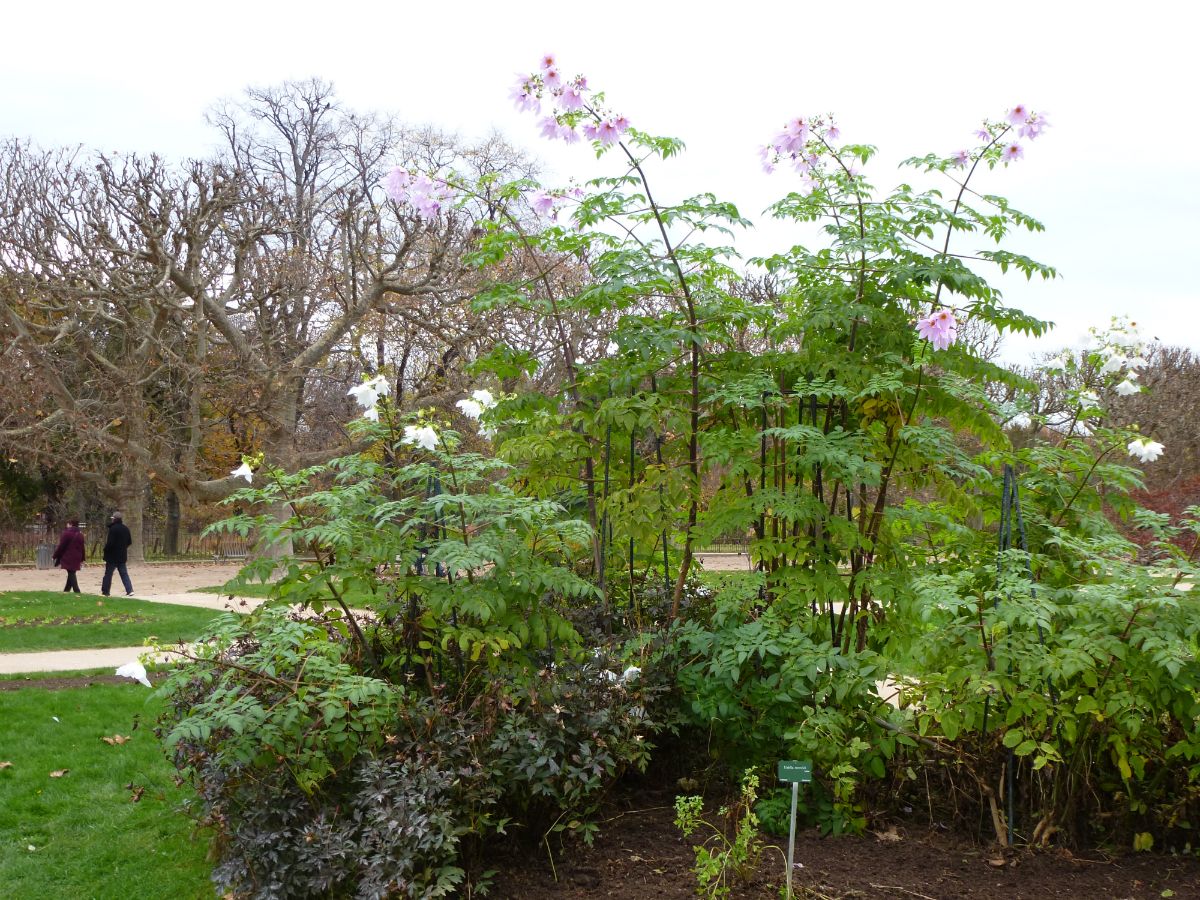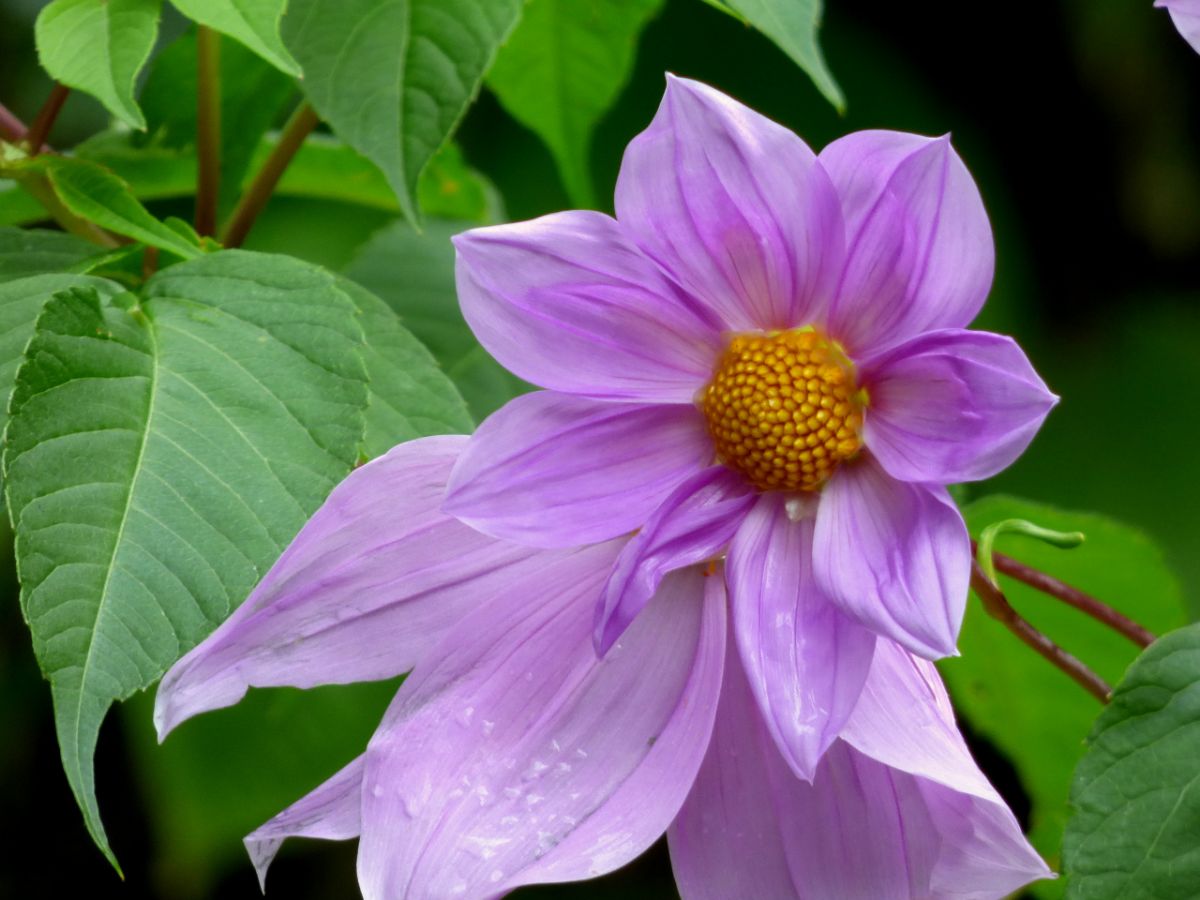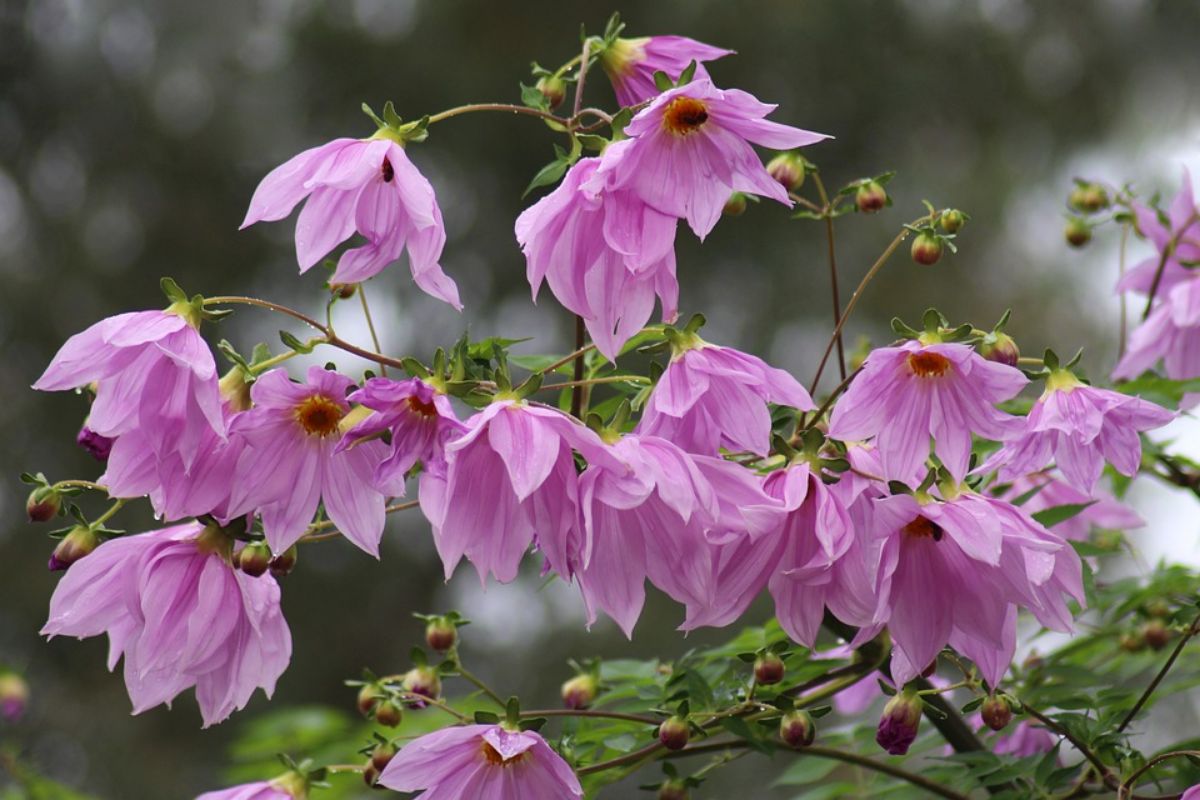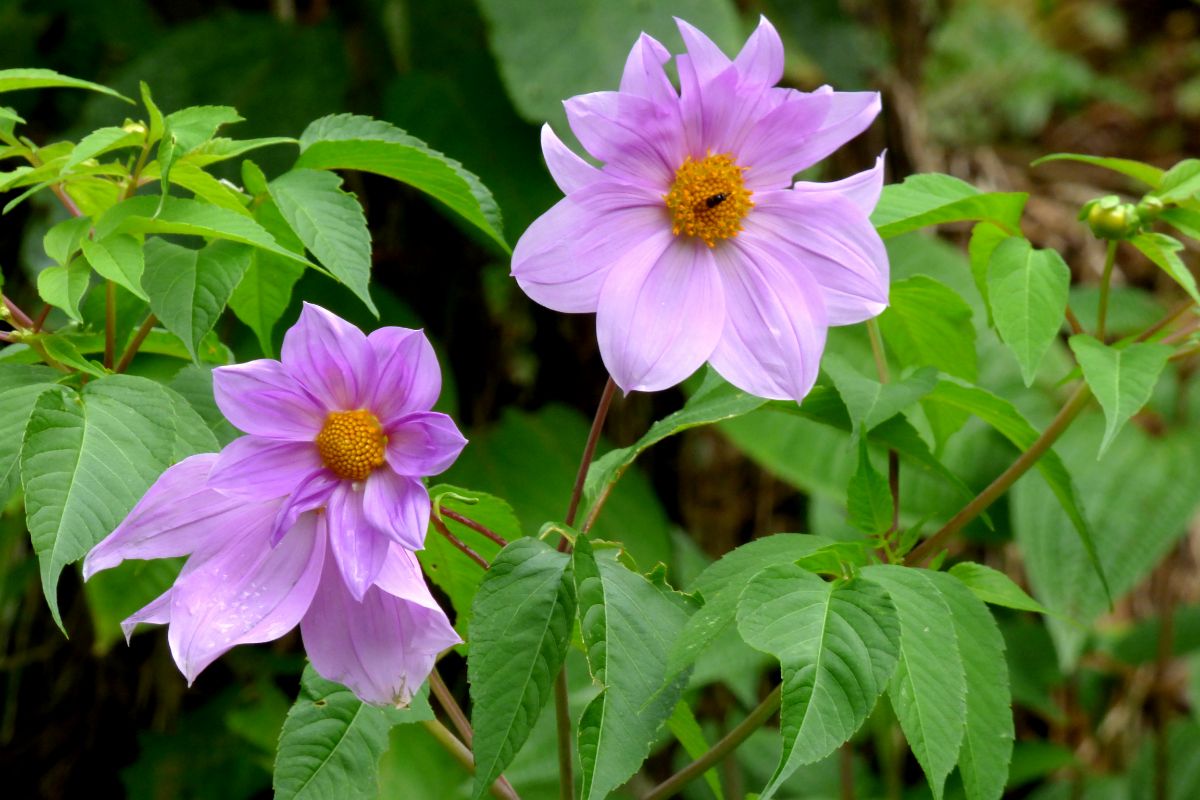
Dahlias, or Dahlias, are one of the best-known flowering plants. But actually This genus is home to about 30 different species, one of them being the Dahlia imperialis. Do you know how it is?
On this occasion we are going to talk to you about the Dahlia imperialis, what it is like, what care it needs and some curiosities that you should know about it. Prepared?
How is the Dahlia imperialis

The Dahlia imperialis, also known as the imperial dahlia, or dahlia catalina, is a plant that reaches 4-5 meters in height, although some speak of 8-10 meters. Its origin is Mexico, where most of the dahlias made themselves known. In fact, its name comes from Nahuatl, which represents three elements: water, flower and tube (because of the stems, since these transport water and nutrients to the flower).
It has been known since the XNUMXth century when it was documented by a Spanish botanist, Francisco Hernández de Toledo, accompanied by a Mexican chronicler, Hernando Alvarado Tezozomoc.
In addition, since 1963 the dahlia is considered as part of the Mexican nationality.
The stems that it has are hollow and as for the leaves these can be bi or tripinnate, that is to say that the leaves themselves are elongated and feather-shaped, which cast other leaves on themselves. For example, imagine a leaf and that, on its sides, more leaves came out (bipinnate) or that three stems with leaves (tripinnate) came out.
As for the flowers, these are in the form of spikes of pink, white or lilac color. The center of any color is yellow and instead of usual, its flowering occurs mainly in autumn (although it may also happen in other seasons).
The main use of the Dahlia imperialis is none other than decorative, as they are placed in places in the garden, either in the ground or in a pot, sometimes with a guide so that the bush grows vertically.
Dahlia imperialis care

Now that you know a little more about the Dahlia imperialis, it is time to talk to you about its care in case you want to have it in your home. They are generally not complicated to care for, but they do need you to meet their needs for them to be healthy.
Location
We start with the location, that is, the place where you should place this plant. It needs a lot of sunlight because it is the one that allows you to do your photosynthesis. Therefore, when looking for a location, we recommend that you put it directly in the sun.
In addition, you can place it on the ground or in a pot, it is indifferent to it, but receiving sunlight is essential. However, It can be in full sun or semi-shade. It will depend on the temperatures that can be acquired in the area where you live. And be careful with drafts, as it can't stand them (and they can easily break its stems because they're hollow).
Temperature
Speaking of temperature, This plant does not resist frost. In fact, when the temperature drops below minus five degrees it begins to suffer. For this reason, when winter arrives, it is better to place it in a dry place that is protected from light so that it holds up well until spring (from April to May), when it can return to its place.
With respect to high temperatures it is much more tolerable.
Land
Dahlia imperialis is not too fussy when it comes to soil, as it has been known to thrive when the soil is low in nutrients and hard. But if you give him a choice, prefers soil with high organic matter. Do not forget about drainage, as this will ensure that it is more nourished, that it does not suffer from caking of the soil (so that the roots can breathe) and that it blooms much better.
Irrigation
As for irrigation, it will depend on the season in which we are. Usually, in winter, it is watered very little, or not at all, while in summer it must be very abundant to ensure that it is always moist. Of course, you have to wait for the soil to dry before watering again.

Fertilizer
It is best to pay with a organic fertilizer (can be liquid) at the end of winter to activate the plant so that it begins to grow and develop strongly.
Pruning
Pruning is done when the flowers begin to wilt. At that time, the withered flowers should be removed and, when you see that the stems also wither, you have to cut them as close to the base as possible. In other words, you are going to completely lose the plant. But this will grow again at the end of winter and in spring (normally it is removed from the place and stored in a dry place without light so that it can be planted again in April or May). In case you do not want to do that, you can put a base of vegetable mulch on it that will protect it from low temperatures.
Plagues and diseases
We are not going to tell you that Dahlia imperialis is a plant resistant to diseases and pests, but it does have few that can harm it. One of the main diseases can be due to not complying with the care you need. A deficiency of light, temperature or irrigation (or an abuse of it) can make it sick.
El powdery mildew it also affects them, especially in the "bulbs". Just like him mildew or the rot.
As for pests, aphids, snails and slugs can be the most damaging to this plant.
Multiplication
The reproduction of the Dahlia imperialis is quite easy to achieve since just dividing the tuber is more than enough. In fact, often by the time fall is over and it is dug up, it may have raised suckers. If these look strong and with roots, they can be separated from the plant to add a product that promotes the roots and thus duplicate your plant.
As you can see, it is a very grateful plant with showy flowers that you will love to look at, but insects much more (since it usually attracts them because of the pollen that its button has). Is it clearer to you now what the Dahlia imperialis is like?